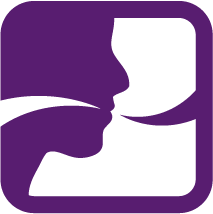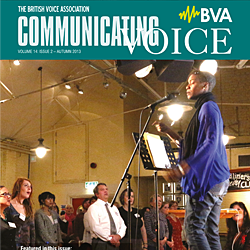About the Association
Archived book reviews
Voice Therapy: Clinical Studies (2nd edition)
Joseph C Stemple
Singular Publishing, 2001
Review by: Katherine Behenna
This revised edition of Joseph Stemple's well known text (1st edition 1993) has been extensively rewritten and expanded to reflect the advances in the field of clinical voice disorders. The scope of the book has been broadened to cover additional disorders such as paradoxical vocal fold movement and transsexual voice change, as well as advances such as Douglas Hicks' fascinating chapter on the as yet unique laryngeal transplant carried out by Marshall Strome. Alongside some of the more useful case studies from the first edition are seventeen new cases by a number of international voice experts. As with the first edition, this format of actual case studies provides a useful way of teaching direct intervention techniques for a wide range of voice disorders as well as considering other aspects of overall management. Each case moves from diagnostic assessment and case history through the selected intervention programme to post-treatment evaluation. In his foreword, the author notes that this text is aimed as a practical adjunct to more theoretical voice texts. The result is a focused and practical manual of proven and well-referenced voice therapy techniques and management approaches presented by 'master voice clinicians', that nevertheless also manages to address important physiological aspects of voice production. In many cases, since the case clinicians are also the individuals who have developed the voice therapy techniques, the result is an excellent way of learning at first hand the nuances of the technique under consideration.
A broad overview of the different philosophies of treatment (hygienic, symptomatic, psychogenic, physiological and eclectic) are first presented and illustrated with a representative case study in Chapter 1 and examples of various voice evaluation techniques (formal questionnaire; patient interview; perceptual voice analysis; instrumental assessment) then discussed in Chapter 2. The theory and practice of well-known techniques that holistically address all 3 aspects of voice production (respiration, phonation and resonance) are then considered in the following chapter. Case studies by experienced practitioners include the Accent Method - Sara Harris; Vocal Function Exercises - Joseph Stemple; Resonant Voice Therapy - Katherine Verdolini; and Lee Silverman Voice Therapy - Lorraine Olsen Ramig, with each case incorporating overall management plan and outcome. It is perhaps debat-able whether purely written instructions can take the place of an auditory and/or visual model to learn a particular technique but most clinicians with even a little experience will find this chapter an invaluable 'master-class' to revise details of selected therapy approaches.
The clinical management of vocal hyperfunction in adults and children is well addressed in chapter 4. Direct exercises such as 'confidential voice'; 'soft whisper technique'; 'yelling safely' and refocusing of laryngeal tone are presented, along with detailed hygiene programmes and consideration of psychosocial issues. Chapter 5 describes the management of vocal hypofunction with case studies illustrating direct therapies and surgical intervention in cases of voice fatigue, vocal fold bowing, senile layngis and vocal fold paralyis. Facilitation techniques are excellently presented in step-by-step format in the appendix to this chapter, along with the underlying rationale for each. Cases of functional and organic resonance disorders are also well detailed by different members of the voice care team.
Management strategies for functional voice disorders are presented in Chapter 6. New contributions in this edition include a section on manual therapy in the treatment of muscle tension dysphonia, and a case study demonstrating strategies used to modify the voice and speech characteristics of a male-to-female transsexual. Other case studies include functional disorder caused by environ-mental stress, and functional falsetto and functional dysphonia.
Chapter 7 is entirely new and recognises the increasing role of the voice therapist as the major caregiver for certain clients with respiratory and laryngeal disorders such as paradoxical vocal fold dysfunction (PVFD), severe asthma or chronic cough syndrome. Several case studies illustrate successful management of such disorders, highlighting the unique combination of knowledge of upper respiratory physiology and experience of behavioural techniques that voice therapists can bring to such cases. This chapter seems to lack a discussion of the professional boundaries and safe practice of respiratory therapy with certain disorders but the clinical presentation of PFVD in several different cases is usefully reviewed and goals of treatment as well as detailed behavioural modification programmes and outcomes presented.
The Management of the Professional Voice covered by Chapter 8 has been hugely expanded to consider particular the problems of a full range of performers and other professional voice users. Cases include a 'high risk performer', a Broadway actor, a university voice major, and a helpful review of strategies used with an actor with hyperfunctional voice disorder. As with many chapters, ideas covered in the main text have been summarised into a valuable set of therapy resources in a separate appendix. Chapter 9 covers the clinical management of both types of spasmodic dysphonia with direct voice therapy, surgical intervention, Botox™ injections, and combination management approaches considered. Chapter 10 is considered by the author to be 'special' in that it contains a fascinating single case study of the only human laryngeal transplant so far.
The final chapter considers what makes voice therapy successful or unsuccessful. This section with its own case studies comes as something of a relief to readers after the resoundingly successful and challenging case studies of the preceding 10 chapters! The fact that the author and contributors acknowledge that voice therapy cannot always fulfil 100% of treatment goals is certainly a valuable teaching point, and one that thus far has not been made in this particular text. The consideration of the reasons for this, including discussion of clinician as well as client expectations/reponses is well put forward.
Overall, this is a very valuable clinical manual that the whole multidisciplinary voice care team will appreciate. Numerous highly experienced clinicians bring to it their expertise in managing both straightforward and challenging cases and the accessible case study format allows the reader to follow all stages of the assessment and intervention process in detail. Although primarily focusing on the 'how' of voice therapy, the 'why' is not overlooked with well-referenced sections on the proven theory behind each approach. Overall, this is a book for clinicians familiar with these techniques to dip into for a refresher or for inspiration and for less experienced therapists to have as an invaluable model to follow.
More archived content online
Disclaimer
Neither the British Voice Association nor the Editor can be held responsible for errors or any consequences arising from the use of information contained in its newsletters (or extracts from its newsletters published online); the views and opinions expressed do not necessarily reflect those of the British Voice Association (BVA) or the Editor, neither does the publication of advertisements constitute any endorsement by the BVA or Editor of any products or services featured.

 Join us Now!
Join us Now! our newsletter
our newsletter free voice care leaflets & information – download here
free voice care leaflets & information – download here Help our work by donating while you shop
Help our work by donating while you shop